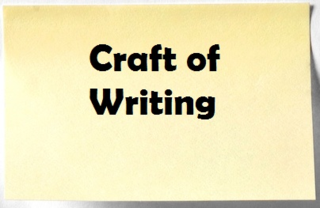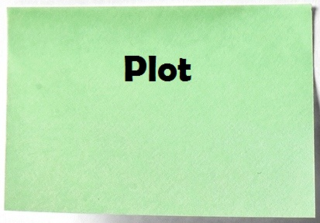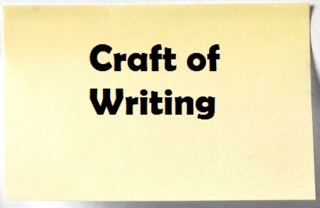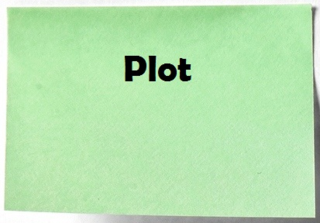Rob Bignell's Blog, page 354
November 5, 2013
Crack a joke – but only for a good reason
Just as in real life when humor is used to ease tension in social situations or to bond with another person, so jokes and comedy serves a purpose in your story.
in real life when humor is used to ease tension in social situations or to bond with another person, so jokes and comedy serves a purpose in your story.
Unfortunately, a lot of novice writers don’t quite know when to inject humor into their fictional tales. The result is they either miss opportunities to use an effective narrative tool or they misuse (and quite often overuse) it.
There are a lot of good reasons to inject humor into your story. Among them:
g Plot device – Comedy can help relieve tension. If a novel, short story or stage play has a number of gruesome murders in it, for example, the reader can become numb to the tale’s intensity. To that end, Shakespeare in “Macbeth" used a short humorous scene (the drunken porter scene) after Macbeth assassinates the king.
g Character development – Jokes can be used to reveal information about characters, such as their foibles (via other characters making fun of them) or their values (as humor can suggest one’s belief system.). These inferred facts about the characters then can be incorporated into the plot for good effect, such as Indiana Jones’ fear of snakes in his various movies.
g Theme – By making fun of an idea or of a character who represents a concept, humor can bring to light a story’s message. There’s nothing quite like a cutting quip to break a protagonist’s knotty reasoning.
Unless you deliberately intend your story to be humorous – such as Douglas Adams’ “A Hitchhiker’s Guide to the Galaxy” – be wary of overusing humor. Jokes and comedy that don’t serve a purpose and that work more like asides to fill up space actually slow the story. In such situations, your characters or narrator are just clowning around.
Need an editor? Having your book, business document or academic paper proofread or edited before submitting it can prove invaluable. In an economic climate where you face heavy competition, your writing needs a second eye to give you the edge. I can provide that second eye.
Related articles
 Make final words of your story count
Make final words of your story count How to create suspense in your fiction story
How to create suspense in your fiction story Avoid handwaving to cover a story flaw
Avoid handwaving to cover a story flaw
November 4, 2013
Think of your story as if a stage production
Sometimes when plotting your short story or novel, thinking of it in terms of a theatrical or film production is useful. That’s because theater and film relies heavily on physical action to make the story work; beginning novelists and short story writers sometimes lose sight of the necessity for action and so get lost in their word-heavy medium.
plotting your short story or novel, thinking of it in terms of a theatrical or film production is useful. That’s because theater and film relies heavily on physical action to make the story work; beginning novelists and short story writers sometimes lose sight of the necessity for action and so get lost in their word-heavy medium.
Four terms can help you think of your novel or short story as if it were a theatrical or film production center on staging.
The first is onstage. These are events that the reader directly reads and experiences, as if a real-time observer or an audience member in a theater. Writers always should be aware that readers consider onstage events dramatic and more important than those that they don’t see.
Events that they don’t see but that are part of a story are said to be offstage. These events can include narration, a reminiscence, an indirect quotation, or even something that happened long before the story occurred and so is inferred.
The challenge for writers is to know when a part of their story should be onstage or offstage. Generally, narration should be kept to a minimum in a story as it is not dramatic action. A reminiscence is fine so long as is it doesn’t take up too much space in the story and so long as it is important by informing the reader about the character or helping advance the plot. When inferring an event, characters usually need to be limited to very specific and brief statements about it so that readers aren’t lost wondering what is being discussed.
Often the problem with a slow-moving story is that too much of the onstage action actually needs to appear offstage. A good example would be eliminating a scene that happened several years before the story occurs and instead simply have the characters refer to it through specific references. If you shift onstage action offstage, you destage the action, a term coined by CSFW’s Steve Popkes. In rewriting, editors who recommend that onstage action be deliberately revised so that it appears offstage often use the term unstage to describe this revising.
Need an editor? Having your book, business document or academic paper proofread or edited before submitting it can prove invaluable. In an economic climate where you face heavy competition, your writing needs a second eye to give you the edge. I can provide that second eye.
Related articles
 Write a great narrative hook for your story
Write a great narrative hook for your story Coax readers to eat your story's veggies
Coax readers to eat your story's veggies Short stories vs. novellas vs. novels
Short stories vs. novellas vs. novels Publish your short stories in an anthology
Publish your short stories in an anthology
November 3, 2013
Editor interviewed at ‘Welcome to the Toi Box’
Published author  Toi Thomas' interview with me appeared Friday on her blog, "Welcome to the ToiBox" (I know, great name for her blog, isn't it!) In the interview, I tell about the celebrity that some people claim I'm most like, my favorite book from childhood, what music I listen to when chillin', and what my next book is about. Thomas is the author of four books, including the novels "Eternal Curse: Giovanni’s Angel" and "Legend of the Boy."
Toi Thomas' interview with me appeared Friday on her blog, "Welcome to the ToiBox" (I know, great name for her blog, isn't it!) In the interview, I tell about the celebrity that some people claim I'm most like, my favorite book from childhood, what music I listen to when chillin', and what my next book is about. Thomas is the author of four books, including the novels "Eternal Curse: Giovanni’s Angel" and "Legend of the Boy."
Need an editor? Having your book, business document or academic paper proofread or edited before submitting it can prove invaluable. In an economic climate where you face heavy competition, your writing needs a second eye to give you the edge. I can provide that second eye.
Related articles
 Get ideas from you head onto paper
Get ideas from you head onto paper Start your story with solid narrative hook
Start your story with solid narrative hook Place commas inside quotation marks
Place commas inside quotation marks Does your book cover design matter for ebooks?
Does your book cover design matter for ebooks? Attract and keep readers via blogging
Attract and keep readers via blogging
November 2, 2013
‘Hikes with Tykes’ ebook on sale this weekend!
This weekend
my Kindle ebook Hikes with Tykes: A Practical Guide to Day Hiking with Kids will be on sale. Beginning today at 8 a.m. PDT, for 12 hours you can receive a 67% discount with the ebook going for just 99 cents. If you should forget to purchase it today, no worries – beginning tonight at 8 p.m. PDT, you can receive a 34% discount with the ebook priced at just $1.99. The sale ends Monday at 8 a.m. PDT.
Comprehensive and conversational, Hikes with Tykes combines hiking parents' experiences, step-by-step how-to's, and practical guidelines to help you plan the perfect day hike with your children. Topics include: finding the best trail for you and your children; choosing the right footwear, backpacks and other gear for kids; using navigational tools from maps and compasses to GPS so no one gets lost; keeping kids from misbehaving by engaging in dozens of activities; and treating trail injuries from blisters to broken bones. Packed with tips from parents who learned how to hike with kids by trial and error, this volume is the only user-friendly guidebook that covers all you need to know about day hiking with children.
Need an editor? Having your book, business document or academic paper proofread or edited before submitting it can prove invaluable. In an economic climate where you face heavy competition, your writing needs a second eye to give you the edge. I can provide that second eye.
Related articles
 Editor's sixth 'Hittin' the Trail' book released
Editor's sixth 'Hittin' the Trail' book released
November 1, 2013
Attract and keep readers via blogging
Among the  best ways to begin a dialogue with readers as well as keep them and the media up-to-date is by creating a blog. A link to your blog should appear on your website among the navigation links. Never underestimate the value of fresh, original content to keep people coming back to your website and interested in your books.
best ways to begin a dialogue with readers as well as keep them and the media up-to-date is by creating a blog. A link to your blog should appear on your website among the navigation links. Never underestimate the value of fresh, original content to keep people coming back to your website and interested in your books.
If you’re apprehensive about setting up a blog, don’t be. They’re much easier to construct (and far less time consuming) than a website. They’re also free (such as Google’s BlogSpot), so don’t let a company sucker you into paying for one. The blog host will offer online tutorials about how to get your page set up.
Give your blog the same name as your website. Don’t worry about there being confusion over which is the blog and which is the website; readers will be able to tell them apart. There will be much more confusion if the names don’t match, as some readers will wonder if your blog is related to your book.
When setting up a blog, you’ll need to select a template (or design) for it. Try to find one that reflects your book’s mood or subject; for example, my hiking book’s blog features a background that is a trail through a field of tall grass. If all else fails, select a generic template in which the colors come close to matching those of your website.
Your blog will include a narrow column, typically on the left or the right side of your blog entry, in which you can add all kinds of pictures, notes and goodies for reader. That a cover of your book with a synopsis of it appears at the top of this column is vital. This helps connect the blog to a book or author. The book cover ought to be linked to a page where visitors can purchase your book online.
Below the thumbnail of your book cover and its description, add a brief “Meet the Author” blurb in which you offer a picture of yourself and a bio. The bio can be the same one used in your book or on its back cover.
If you offer consulting or other services related to your book – for example, maybe you’re a financial planner who’s authored a book about how to get wealthy – also include a picture or logo of your business as well as a brief blurb advertising it. Include a link as well to your business website.
Other items that might be included in the navigation column are a list of “followers,” or other bloggers who regularly read your blog (those bloggers typically declare that they are followers or fans of your site), as well as a list of previous blog entries with links to those pages. These elements typically are automated so that you don’t have to worry about maintaining them.
Need an editor? Having your book, business document or academic paper proofread or edited before submitting it can prove invaluable. In an economic climate where you face heavy competition, your writing needs a second eye to give you the edge. I can provide that second eye.
Related articles
 Offer your readers a photo gallery page
Offer your readers a photo gallery page Construct a 'What Others are Saying' web page
Construct a 'What Others are Saying' web page Forewords, prefaces and introductions
Forewords, prefaces and introductions
October 31, 2013
Fixing tab errors when formatting an ebook
When formatting an ebook in Microsoft Word, one problem a number of authors run into is a “tab” error. In the case of Kindle ebooks, this usually means an unsightly, extra space or two before a heading or a paragraph. In the case of other ebook formats, especially if uploading them through Smashwords, this usually means not being included in their premium catalogs until the “problem” is correcting.
an ebook in Microsoft Word, one problem a number of authors run into is a “tab” error. In the case of Kindle ebooks, this usually means an unsightly, extra space or two before a heading or a paragraph. In the case of other ebook formats, especially if uploading them through Smashwords, this usually means not being included in their premium catalogs until the “problem” is correcting.
Fortunately, fixing tab errors is simple enough:
g In the command ribbon at the top of your document, look for the section labeled “Paragraph”. To the right of that word should be an arrow pointing southeast. Click that arrow.
g A window will open on your screen. In the lower left-hand corner of the screen, click “Tabs”.
g A new window will open. In the lower right-hand corner, click “Clear All” then “OK”.
All the tabs in your manuscript will disappear.
That may create a new problem for you, however: If you formatted your ebook so that each new paragraph was indented, all of the indents just disappeared. You’ll have to go back and add a blank line (aka a paragraph return) between each paragraph – which is how Smashwords anyways wants you to format your text anyway.
Need an editor? Having your book, business document or academic paper proofread or edited before submitting it can prove invaluable. In an economic climate where you face heavy competition, your writing needs a second eye to give you the edge. I can provide that second eye.
Related articles
 Formatting main text for your book
Formatting main text for your book Editor releases fifth 'Hittin' the Trail' book
Editor releases fifth 'Hittin' the Trail' book
October 30, 2013
A cosmetic difference? makeup vs. make-up
I wouldn’t make up this: Apparently people who’ve been applying makeup all of their lives don’t know how to spell what they’re putting on their face! Time for a makeup study session on this.
make up this: Apparently people who’ve been applying makeup all of their lives don’t know how to spell what they’re putting on their face! Time for a makeup study session on this.
How the word is spelled really centers on what part of a speech it is in a sentence.
If a verb, it’s two words (“make up”) as in “You can make up the test after school.”
If a noun or adjective, it’s one word, no hyphen (“makeup”). To wit, “She purchased makeup at the cosmetics counter” (noun) and “Are you ready to take your makeup test?” (adjective).
Now you’re already to take that grammar test!
Need an editor? Having your book, business document or academic paper proofread or edited before submitting it can prove invaluable. In an economic climate where you face heavy competition, your writing needs a second eye to give you the edge. I can provide that second eye.
Related articles
 All in order: Follow up vs. follow-up vs. followup
All in order: Follow up vs. follow-up vs. followup Direct info: First hand vs. firsthand vs. first-hand
Direct info: First hand vs. firsthand vs. first-hand
October 29, 2013
Give readers sleepless nights with narrative drive
Ever read  story before bed and find it so gripping that you stay up far later than you should just to find out what is going to happen? If so, you’ve been a “victim” of narrative drive.
story before bed and find it so gripping that you stay up far later than you should just to find out what is going to happen? If so, you’ve been a “victim” of narrative drive.
Narrative drive is the force that makes a reader feel that something is about to happen. The more powerful your narrative drive, the less likely the reader is to put down the story.
Narrative drive is the force that makes a reader feel that something is about to happen. The more powerful your narrative drive, the less likely the reader is to put down the story.
All of the great works of literature have powerful narrative drives.
But creating a strong narrative drive involves a lot more than creating interesting settings (as does Frank Herbert in “Dune”), intriguing characters (as does Orson Scott Card in “Ender’s Game”), or a fascinating premise (as does Isaac Asimov in “Foundation”). It is all of these things more: good plotting, mesmerizing settings, captivating characters, proper point of view selection, an absorbing theme, and an artists’ handling of stylistic issues. So, while we can discuss elements of a story in isolation, as occurs on this Web site, always remember that a good story is the sum of these parts.
To obtain narrative drive, then requires a full sense of a story’s various elements. Still, there are a couple of things to keep in mind to improve your story’s narrative drive:
g Link description with action – Whenever you opt to describe a landscape or character, ensure that it serves the dual purpose of moving forward the story’s plot.
g Avoid stiff writing by using repetitious and superfluous wording – Poor writing follows a “He did this then this happened” pattern while quality writing takes an “As he did this, this happened” approach.
Need an editor? Having your book, business document or academic paper proofread or edited before submitting it can prove invaluable. In an economic climate where you face heavy competition, your writing needs a second eye to give you the edge. I can provide that second eye.
Related articles
 Consider organizing short stories into fix-it novel
Consider organizing short stories into fix-it novel Make story interesting by establishing stakes
Make story interesting by establishing stakes Write a great narrative hook for your story
Write a great narrative hook for your story Coax readers to eat your story's veggies
Coax readers to eat your story's veggies Writers can blog about variety of topics
Writers can blog about variety of topics
October 28, 2013
Start your story with solid narrative hook
One sign of  a good opener is that it makes the reader want to continue with the story. Using a fishing metaphor, a good opener “hooks” the reader.
a good opener is that it makes the reader want to continue with the story. Using a fishing metaphor, a good opener “hooks” the reader.
Writers who catch the reader have employed a successful narrative hook. A narrative hook involves dangling elements of the story before the reader so he can’t help but bite. This is done by making the reader want to know more - the who, what, where, when, how and why of the story.
Consider this story opener:
Jord ducked around the corner, pressed himself hard against the damp wall, wishing he could fade into it. His eyes darted toward the wall’s edge, hoping to catch the shift of a shadow, a movement of brush, any sign at all that they were close.
Notice how it dangles elements of the story. The reader wants to know why Jord is running and who is chasing him. The reader wants to know if Jord will get caught.
Successful narrative hooks usually begin the story in the middle of the action. Conflict already is underway. Beginning a story this way immediately creates dramatic tension, which for most readers is the delight of the narrative.
Need an editor? Having your book, business document or academic paper proofread or edited before submitting it can prove invaluable. In an economic climate where you face heavy competition, your writing needs a second eye to give you the edge. I can provide that second eye.
Related articles
 Draw readers into story with great opening lines
Draw readers into story with great opening lines Start story with event that upsets status quo
Start story with event that upsets status quo Place Easter egg to reward careful readers
Place Easter egg to reward careful readers Maintain 'fictional dream' when penning novel
Maintain 'fictional dream' when penning novel Tighten writing by cutting begin fallacy
Tighten writing by cutting begin fallacy
October 27, 2013
Limit number of key characters in story
Can your  story have too many characters? Probably not – but your story can have too many key characters.
story have too many characters? Probably not – but your story can have too many key characters.
Authors populate their stories with as many characters as needed to make a scene work. A scene about an ancient battle between two armies may literally have thousands of characters. However, almost all of them are background characters with no dialogue or description of their appearance and actions. Instead, the writer focuses on just a couple of characters – perhaps the leader of each opposing army. A couple of their subordinates might be minor characters in scenes, but the take is all about the angst and decisions of the leaders and the conflict they experience internally and externally with one another.
In general, one or two key characters is the limit in a short story. A novel might have up to three or four at most. Even in novels about a group of characters – say one of the “Star Wars” stories in which Luke Skywalker, Princess Leia, Han Solo, Chewbacca, C3PO and R2D2 form the main cast – the writer builds the story around just two or three of them. For example, Luke, Leia and Han typically are the major characters with Chewie and the two droids relegated to secondary roles in most scenes.
There’s good reason for an author to limit the number of key characters:
g Plot loses its urgency – When one or two characters have something at stake, the drama is heightened. If too many characters have conflicts that must be resolved, the writer has fewer words to fully work through each plot line, potentially diffusing the tension.
g Prevents strong character development – Too many character decreases the reader’s ability to identify with any one of them. If a reader doesn’t have any feelings about the character (whether they be good or bad), the book likely will be set aside for a more interesting one. After all, what incentive is there to finish the story?
g Confuses readers – When each new chapter means that the point of view will be shifted to focus on a different character, you risk perplexing the reader, at least until they catch on to what you’re doing. In addition, the more key characters there are, the more difficulty readers will have keeping track of each one through the story.
While a novel allows writers the luxury of more key characters as the increased number of words gives room to develop them each of them, a challenge they face is introducing all of the key ones early in the book. Waiting too long to introduce a key character limits the ability to develop them and lessens their integration in the overall plot so that their late entrance can feel contrived. Because of this, many novelists follow a rule that they must introduce all key characters by chapter three.
Need an editor? Having your book, business document or academic paper proofread or edited before submitting it can prove invaluable. In an economic climate where you face heavy competition, your writing needs a second eye to give you the edge. I can provide that second eye.
Related articles
 How to create suspense in your fiction story
How to create suspense in your fiction story Write your story's penultimate scene
Write your story's penultimate scene Center on internal flaw for compelling story
Center on internal flaw for compelling story



